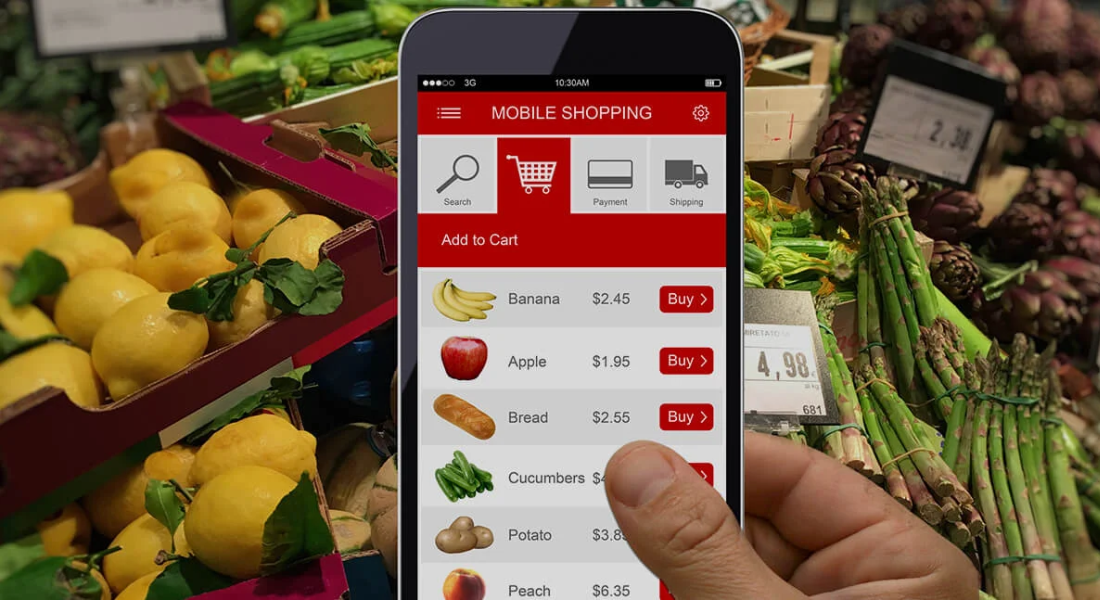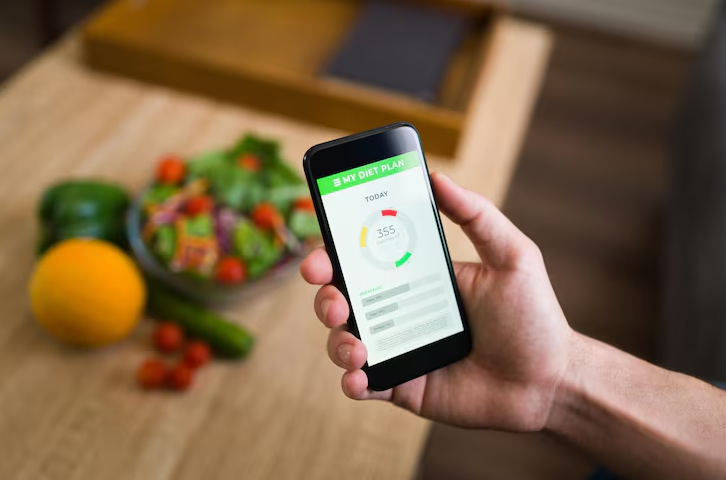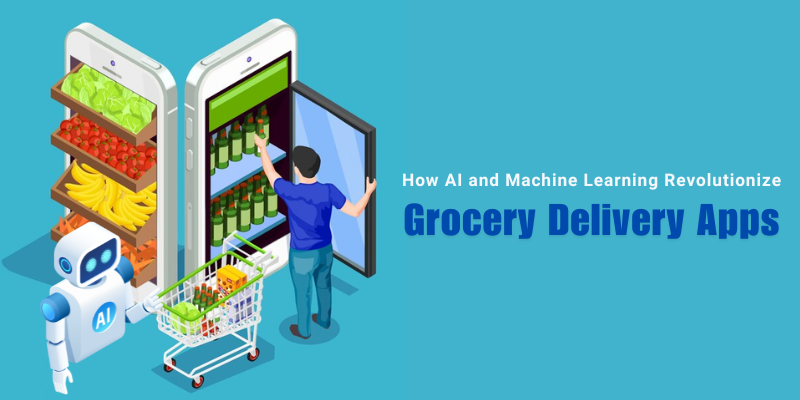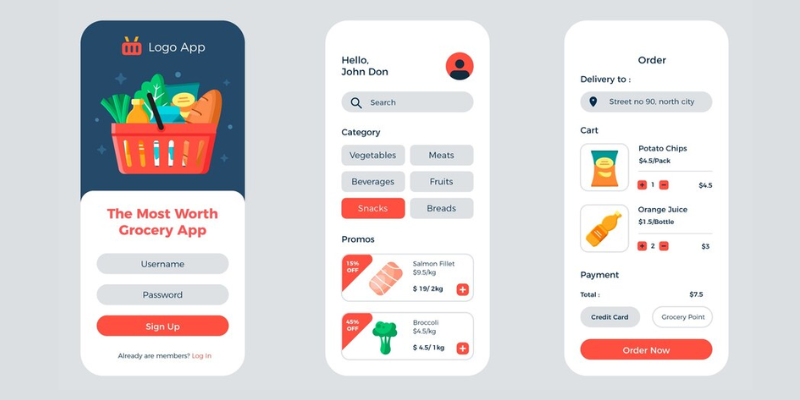The year 2024 is here, and the way we use technology to purchase food is becoming more digitized, with apps for delivery! These apps aren't only a nice thing to have, but they're also essential and will change shoppers' shopping habits. In the past, people would go to shops to purchase items in person. Today, everything is purchased with the assistance of a mobile phone, and the products are delivered right to our doorsteps. The change isn't just for special occasions, but it's become the foundation of applications, and they are developing extremely quickly.
Analysts from the industry predict that grocery delivery app development demand will grow significantly over the next couple of decades. The advent of the online grocery business will make this change.
Most grocery store owners are contemplating opening an online store to expand their business or provide grocery delivery services. They also think that developing an app to deliver on-demand could be advantageous.
What is a Grocery Delivery App?
The principle behind the development of grocery apps is to deliver groceries to people in need as swiftly as possible. Technology is an enabler in this. If you're an avid observer, you may have recently noticed the growth of numerous start-ups based within it.
GoPuff, Swiggy, Bolt, Nuro, Getir, and the list continues. There are many names. But how do you make it work? It requires much effort and a good understanding of the application development industry.
Let's begin by understanding the different kinds of grocery apps that can be designed around food items and then create an app for grocery shopping.
Grocery apps are available in various styles, each suited to consumers' preferences and needs. Knowing the different types of apps is essential for both entrepreneurs and consumers looking to enter the market.
Traditional Grocery Apps
The most well-known one is. These platforms let users buy food items online and then have them delivered to their doorstep.
On-Demand Grocery Apps
Apps for grocery delivery, such as Getir, for instance, have revolutionized convenience. If you need groceries quickly, you can get them in a matter of minutes. These apps are focused on providing various daily necessities in record time, usually within minutes.
Grocery Aggregator Apps
These platforms integrate items from local stores and provide consumers with a single place to shop and purchase from multiple stores.
Subscription-Based Grocery Apps
Although it is often an integrated feature of applications, it can stand alone. Users can subscribe to regular grocery delivery.
Coupon Apps
These apps allow you to find coupons for groceries and redeem them. Here are some examples: Ibotta Checkout 51 Fetch Rewards and Checkout 51.
Meal Planning Apps
What do you do if you're planning an event and require all the essential items provided? This is what meal-planning apps can do to aid you in planning your meals and grocery shopping lists. Here are some illustrations: Mealime, Yummly, and Dinnerly.
You can see the methods for creating businesses. It is possible to think outside of your comfort zone and create a completely innovative business model. Instacart's business model is one of the models to consider.
Cost of Developing an On-Demand Grocery Delivery App
Many factors influence a grocery delivery app's cost of launch. The company focused on the project's geographical area of the project along with its functions and features and the timeframe for completion.
The cost of creating an app for supermarkets is determined by many factors, including your business strategy, the type of app—complex, basic, large-scale, or simple-pricing platforms—structure, stacks, the grocery delivery app development company expertise, and so on.
The cost of creating an app that provides on-demand delivery of groceries could range between $20000 and $65000 in USD. The cost will also be determined by the features of the app you'd like to utilize.
The issue of which option is the best for you can't be answered in a certain way. The context in which you perform your duties and goals will decide the outcome of your work.
Need for the Development of Grocery Delivery Apps
In today's digitally connected world, the rise of grocery delivery apps is now more of a requirement than a luxury option for companies in the grocery industry. Here are the main reasons businesses should be embracing the development of apps for grocery delivery:
Evolving Customer Expectations
Today, consumers expect ease and convenience in all aspects of their lives, even grocery shopping. Due to the increasing popularity of e-commerce and online services, the majority of customers are turning to mobile devices for everyday requirements.
Vegetable delivery services cater to these new expectations by offering the most seamless and efficient shopping experience. Companies that do not keep up with the changing demands may lose customers to competitors who provide the convenience of online grocery shopping.
Enhanced Customer Reach
Grocery delivery applications allow companies to extend their customer reach beyond the physical store. With the advent of digital technology, businesses are able to serve more people, such as professional professionals, tech-savvy people, and those with limited mobility.
Furthermore, these apps break down barriers to geography that allow customers to make orders from any location and at any time. This broader reach leads to an increase in sales and more customers.
Increased Customer Loyalty
Grocery delivery apps can boost customer loyalty and increase retention. With personalized recommendations, targeted promotions, and easy reorder options, Businesses can provide an engaging and personal shopping experience.
Customer loyalty programs built into the app could also motivate frequent purchases and build lasting relationships. Satisfied and loyal customers increase revenue and act as brand ambassadors, promoting this app among their loved ones and friends.
Operational Efficiency
Vegetable delivery software streamlines the process of ordering and fulfillment, improving the efficiency of businesses' operations. These apps allow companies to monitor inventory levels, track orders, and improve delivery routes, ensuring the smooth operation of their operations while reducing mistakes.
By automating different tasks, companies can better allocate resources and concentrate on providing exceptional customer service.
Competitive Advantage
Amidst a crowded marketplace, companies must stand out from their rivals. Developing a grocery delivery application gives them a major advantage in the marketplace. It establishes businesses as modern and customer-focused, setting the app apart from traditional brick-and-mortar stores.
Companies can utilize technology to offer an easy shopping experience via apps to draw in new customers, keep existing customers, and remain ahead of the pack.
By embracing digital changes and investing in grocery app development businesses, they will unlock new growth opportunities and adapt to the ever-changing marketplace for groceries. This is a crucial step in fulfilling consumers' needs and building an effective presence in the age of digital.
Market Trends of Grocery Delivery Apps
Knowing the way that grocery delivery apps are performing in the marketplace requires considering several essential aspects, including the rate of growth, the items that are typically sold as well as how consumers use this app quickly and how they compare to their competitors, and the latest trends that are related to this sector. These factors aid in determining the degree of their current performance and what's likely to happen in the future as a start-up. It's similar to putting together elements of a piece to get a complete picture of the world of grocery delivery apps.
Market Growth Analysis
Recently, the app for the grocery delivery market has been discussed in the public world. The growing number of shoppers who prefer to shop online from home with gadgets like smartphones and computers should not be overlooked either.
Furthermore, while the pandemic was afoot, the prevailing trend of buying food online was significantly significant. The growth of trends doesn't appear to be slowing down. As technology continues to expand in our everyday lives and we attempt to use our money and time more efficiently, these applications will grow. According to experts, considering this, an increasing number of people will use these apps, which will increase revenue for these businesses and expand their business worldwide.
Consumer Behavior Trends
The way people shop with food delivery apps is changing. Customers are increasingly using apps that are quick, user-friendly, and simple to use, and provide a variety of items to pick from. In a growing number of cases, consumers are interested in knowing the origins of their food, and they're deciding on organic and sustainable alternatives.
They also want their food items delivered the same day they purchase. Additionally, shoppers are embracing options that help them to shop more personally, such as getting special offers and suggestions just for customers because of AI (artificial intelligence). In addition, more people are signing up for loyalty programs or memberships, which makes them want to return and keep buying more frequently.
Competitive Landscape
The app market for grocery delivery is very competitive and diverse. Large multinational corporations, local businesses, and small-scale start-ups are all in the same game. They want to be successful in their business by delivering groceries more quickly, ensuring that they provide better service, expanding the range of items they offer, and identifying innovative technology features.
Sometimes, companies participate in price wars to attract more customers. They also have promotional events in partnership with the supermarkets and spend lots of money on marketing. They also join coalitions or purchase other companies in their support to expand their reach and coverage.
Emerging Trends and Innovations
Innovations and trends influence the world's development in the Grocery Delivery Market for Apps. Things like delivering groceries using drones, moving to and from self-driving cars, and using smart technology to track inventory levels and tailor the shopping experience are futuristic ideas in the present. In the same way, making adjustments to prices while on the move using AI and machines that learn to predict what's likely to be required, as well as improving customer service, are essential developments of the present.
In addition, it's a huge task to make deliveries more sustainable by using less plastic and decreasing food waste. For instance, there are many options for various diets, such as gluten-free, vegan, or organic, for those who view their food choices as closely tied to their lifestyle.
The Key Takeaway
Making a grocery delivery app in 2024 can make you feel both energized and exhausted simultaneously because everything takes an enormous amount of effort and concentration to ensure that the system functions correctly. It is important to pay attention to the small details. You have to understand customers' demands and ensure that you enhance your skills every step of the method.
It is a simple fact that you must go into the market and thoroughly study the customers' needs and how best to pick the features and technology for your app. You should also conduct tests repeatedly to ensure everything works as expected. Ensuring that each of these steps meets what is expected of modern users is essential in ensuring that our app can fulfill its mission.
The complexity of app development and the fierce market competition make it necessary to work with a seasoned on-demand grocery delivery app development company. A cooperative agreement with such kind of collaboration will ensure that you have everything needed, including the expertise and resources that will allow you to tackle the issues in app development and maintain your business at the top of the list by helping it prosper in the marketplace.






